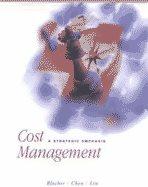A company produces two products. Product 1 sells for $125 and Product 2 sells for $85. Each product uses only one type of raw material that costs $6 per pound. The company has the capacity to annually produce 101,000 units of each product Its average cost per unit for each product at this level of activity are given below. Product Product 5:30 $12 21 20 Direct materials Direct labor Variable manufacturing overhead Traceable Eixed manufacturing overhead Variable selling expenses Common fixed expenses Total cost per unit 17 13 16 $105 19 9 11 $77 The company considers its traceable fixed manufacturing overhead to be avoidable, whereas is common fixed expenses are unavoidable and have been allocated to products based on sales dollars. Consider each of the following questions separately. 1. The company expects to produce and sell 81,000 units of Product 1 during the current year. One of the company's sales representatives has found a new customer who wants to buy 11,000 additional units of Product 1 for a price of $84 per unit. What is the financial advantage (disadvantage) of accepting the new customer's order? Financial advantage A company produces two products Product 1 sells for $125 and Product 2 sells for $85. Each product uses only one type of raw material that costs $6 per pound. The company has the capacity to annually produce 101,000 units of each product, Its average cost per unit for each product at this level of activity are given below: Product Product Direct materials $30 Direct labor 21 Variable manufacturing overhead 8 Traceable fixed manufacturing overhead 17 Variable selling expenses 23 Common fixed expenses 16 Total cost per unit $105 $12 20 G 19 9 11 $77 The company considers its traceable fixed manufacturing overhead to be avoidable, whereas its common fixed expenses are unavoidable and have been allocated to products based on sales dollars. Consider each of the following questions separately 3. Assume the company normally produces and sells 91,000 unit of Product 2 per year. What is the financial advantage (disadvantage) of discontinuing Product 2? Financial (disadvantage) A company produces two products. Product 1 sells for $125 and Product 2 sells for $85. Each product uses only one type of raw material that costs $6 per pound. The company has the capacity to annually produce 101000 units of each product Its average cost per unit for each product at this level of activity are given below: Product Product Direct materials $ 30 $12 Direct labor 20 Variable manufacturing overhead 6 Traceable fixed manufacturing overhead Variable selling expenses Common fixed expenses Total cont per unit $37 19 21 8 17 13 16 $105 9 The company considers its traceable fixed manufacturing overhead to be avoidable, whereas its common fixed expenses are unavoidable and have been allocated to products based on sales dollars. Consider each of the following questions separately. 5. The company expects to produce and sell 81,000 units of Product 1 during the current year. A supplier has offered to manufacture and deliver 81,000 units for a price of $84 per unit. What is the financial advantage (disadvantage) of buying 81,000 Product 1 units from the supplier instead of making those units? Financial (disadvantage) A company produces two products Product 1 sells for $125 and Product 2 sells for $85. Each product uses only one type of raw material that costs $6 per pound. The company has the capacity to annually produce 101,000 units of each product Its average cost per unit for each product at this level of activity are given below: Product Product $30 21 $12 20 Direct materials Direct labor Variable manufacturing overhead Traceable Eixed manufacturing overhead Variable selling expenses Common fixed expenses Total cost per unit 17 13 16 $105 19 9 11 577 The company considers its traceable fixed manufacturing overhead to be avoidable, whereas its common fixed expenses are unavoidable and have been allocated to products based on sales dollars. Consider each of the following questions separately 7. The company's customers will buy a maximum of 81,000 units of Product 1 and 61000 units of Product 2. there are only 161.000 pounds of raw material available for production, how many units of each product should be produced to maximize profits? Product Product 2 Units produced










